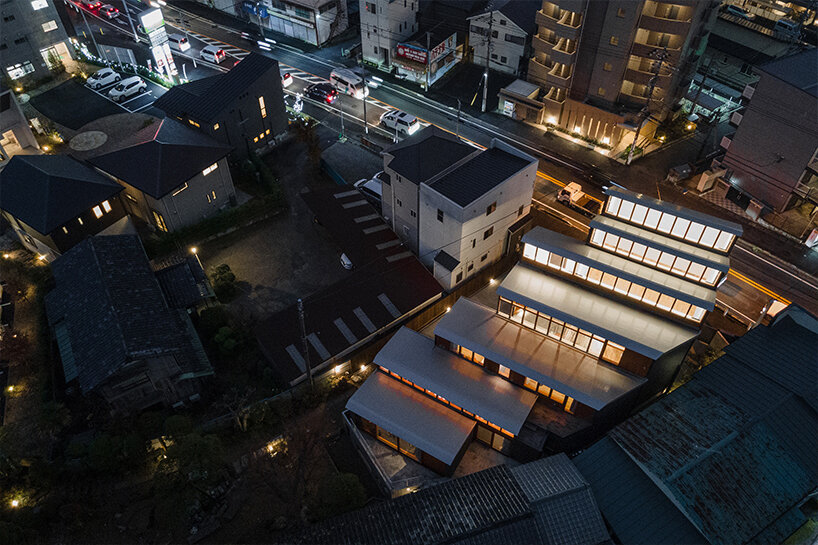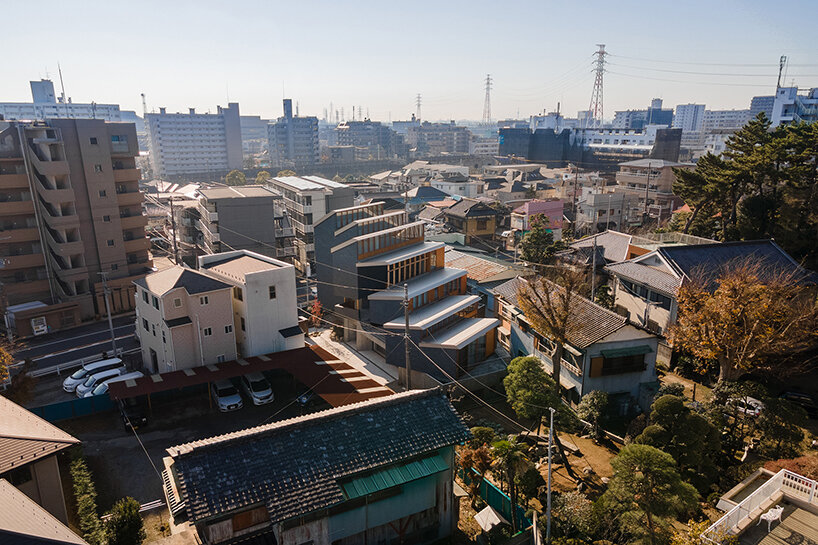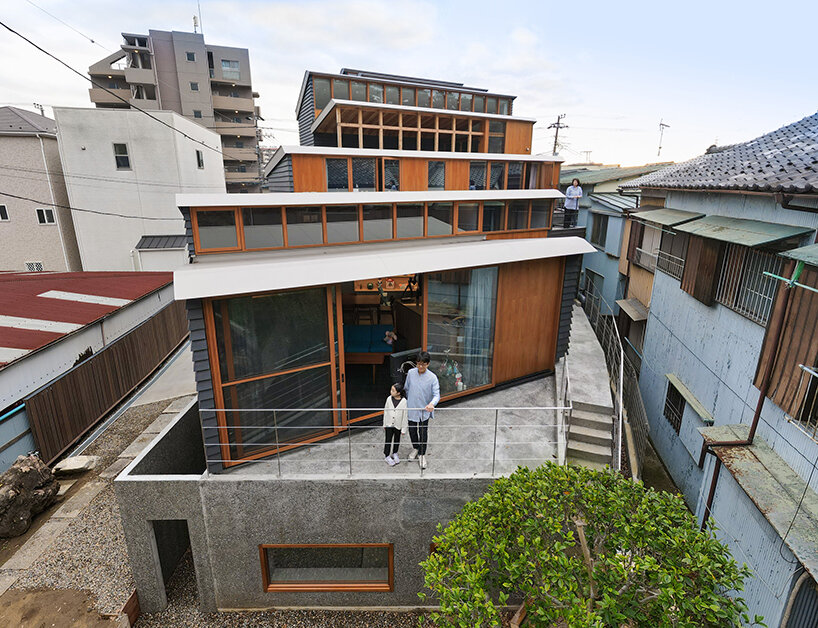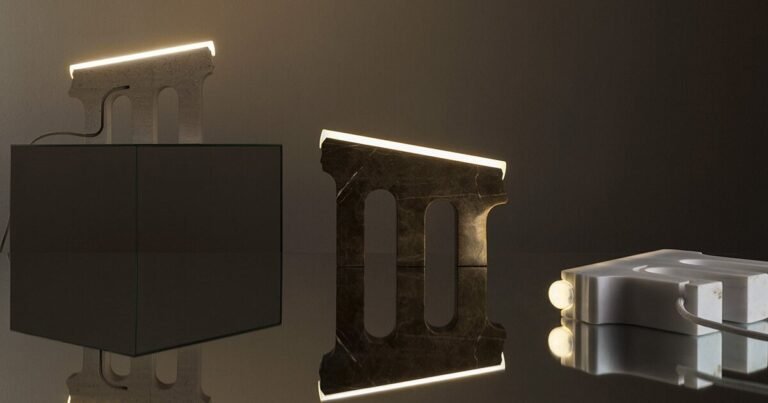seven staggered volumes by KOMPAS accommodate household home and gallery in japan
a hybrid structure in japan by KOMPAS
studio KOMPAS introduces the ‘nishiji project’, a hybrid structure conceived to accommodate a family house and a gallery space. the client, an art collector operating a real estate business, requested to position the new structure on his parent’s property — close to their existing residence — in the historical part of chiba, japan. to successfully incorporate all the needs of the owners, the final composition takes shape as a series of seven staggered volumes, standing on a washed concrete mass that resembles a castle base. with this arrangement, the architects sought to make the building stand out, all the while making the most of the natural light and generating a dynamic spatial experience for both the residents and the visitors.  all images by vincent hecht (see more works of the photographerhere)
all images by vincent hecht (see more works of the photographerhere)
forming seven sawtooth roof units
the design team positioned the galleries and offices in a vertical three-storey arrangement on the southern side towards the urban fabric, shaping the main face of the building. behind this facade, the building volume gradually steps down towards the north and ends up to a central garden. with this organization, the architects moderated the level differences between the two buildings, yet formed a visual communication between them. according to the client’s requirements, they aimed to create a public entrance, ‘an attraction’ as they mentioned, inviting visitors to come in. ‘we aimed to incorporate publicness and versatility into the new building together with attractive design, like ‘museum with a house’ rather than ‘house with galleries’.’ mentioned the hong kong and tokyo-based architectural design studio.
when it came to external materiality, the design team at KOMPAS wrapped most of the sawtooth roof units with custom-designed traditional kawara tiles. with this gesture, they sought to reminisce the old warehouse building that existed on the site from the grandparents’ generation. apart from the memorial meaning, these tiles are blackened to resist salt damage and form a solid appearance to protect the residents’ living. moreover, in some cases, the kawara tile turned and fixture outwards to assemble louvered openings. therefore, the kawara louvers partially open the solid façade to incorporate filtered daylights and views with privacy control from the road. on the other hand, the north-facing sawtooth roofs let abundant daylights enter in and form a well-lit environment for the art spaces. as it is perceived, the pitch and height of the sawtooth roofs differ according to the internal functions, to incorporate appropriate daylights. 
generous interstitial spaces such as canopies and terraces distributed throughout the building and offer a unique spatial experience to the inhabitants and visitors. the southern three steep roofs function as skylights filling full of natural light into the gallery while the main living space below is penetrated by openings that overlook the garden.
considering the growing collection of the owner, various interstitial spaces are designed for flexible usages and potential exhibition spaces to accompany the main galleries. furthermore, spacious outdoor terraces and the external landscape, welcome younger and older to wander around and experience dynamic spatial sequences with various materiality and daylights.
the gallery dubbed ‘kanda & oliveira’ is now open to public (see more here).

the southern three steep roofs function as skylights filling full of daylights into the gallery

